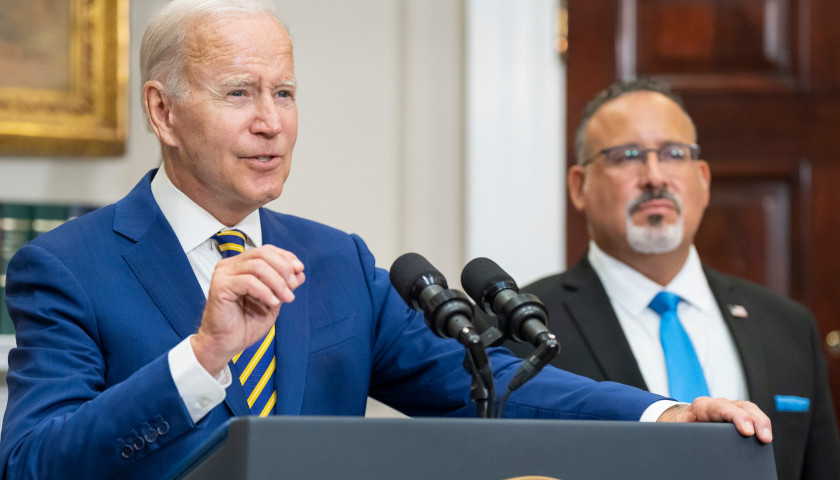by Casey Harper
President Joe Biden announced Wednesday his administration would “forgive” $10,000 in federal student loan debt for those making less than $125,000 per year. The Committee for a Responsible Federal Budget said the plan could cost taxpayers more than $200 billion.
The total income cap is expected to be higher for married couples, likely around double the $125,000 mark, though that has not been confirmed.
For Pell Grant recipients, the debt reduction will total $20,000. The plan will also allow borrowers to cap repayment of their loans at 5% of their income, and it extends student loan repayment “one final time” through Dec. 31 of this year, according to the White House.
“In keeping with my campaign promise, my Administration is announcing a plan to give working and middle class families breathing room as they prepare to resume federal student loan payments in January 2023,” Biden said in a statement.
The decision comes after months of warning of the budgetary impacts over increased inflation and federal debt from the decision.
“Simply extending the current repayment pause through the end of the year would cost $20 billion – equivalent to the total deficit reduction from the first six years of the IRA, by our rough estimates,” the Committee for a Responsible Federal Budget said in a statement. “Cancelling $10,000 per person of student debt for households making below $300,000 a year would cost roughly $230 billion. Combined, these policies would consume nearly ten years of deficit reduction from the Inflation Reduction Act.”
A CNBC/Momentive survey released earlier this week reported that 59% of those surveyed said they are concerned forgiving student debt will hike inflation. As the Center Square previously reported, Harvard Professor and former Chair of President Barack Obama’s Council of Economic Advisors Jason Furman argued that forgiving student debt “benefits recent college grads and hurts most everyone else, both rich and poor.”
“Student loan relief is not free,” Furman wrote on Twitter. “It would be paid for. Part of it would be paid for by the 87% of Americans who do not benefit but lose out from inflation. Part of it would be paid for by future spending cuts [and] tax increases – with uncertainty about who will bear those costs.”
Critics pointed out that Democrats have repeatedly said Biden does not have the authority to forgive the loans.
“People think that the president of the United States has the power for [student loan] debt forgiveness,” House Speaker Nancy Pelosi, D-Calif., said in April. “He does not.”
Lawmakers also blasted Biden for the plan.
“Joe Biden has had a lot of bad ideas,” U.S. Sen. Tom Cotton, R-Ark., said. “But transferring billions in student loan debt to taxpayers – especially at a time of high inflation – might be his worst idea yet.”
– – –
Casey Harper is a Senior Reporter for the Washington, D.C. Bureau of The Center Square. He previously worked for The Daily Caller, The Hill, and Sinclair Broadcast Group. A graduate of Hillsdale College, Casey’s work has also appeared in Fox News, Fox Business, and USA Today.
Photo “Joe Biden” by Joe Biden.




